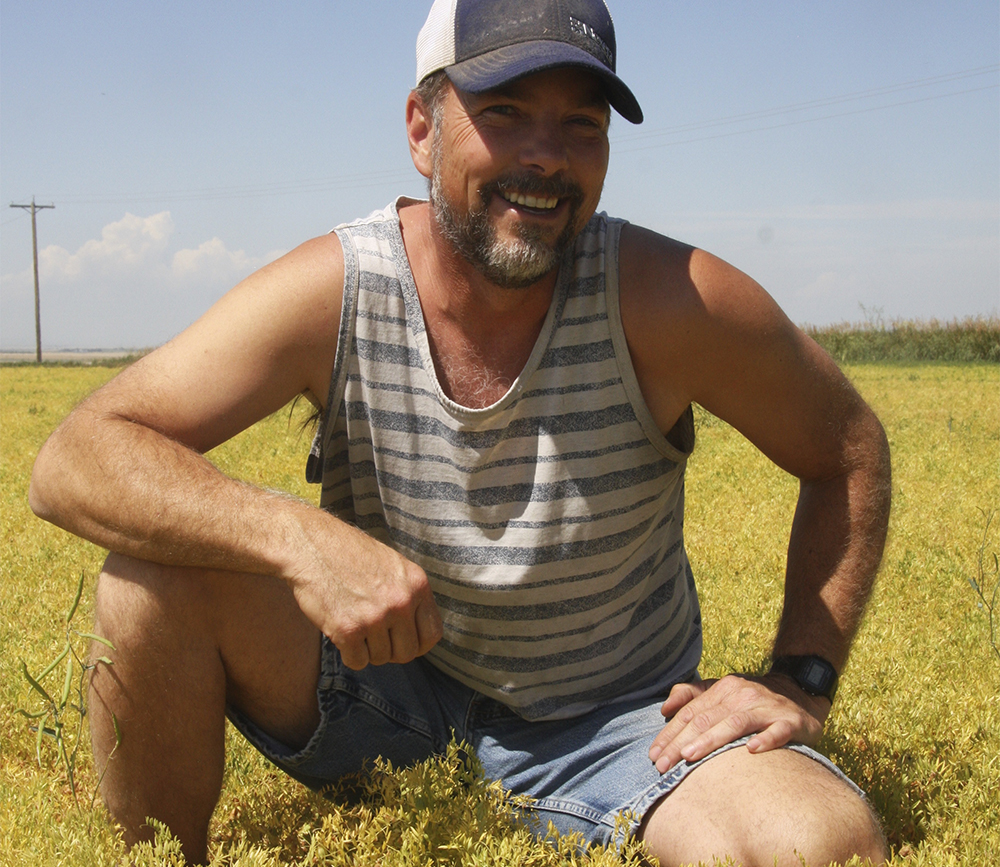Cam Miller can barely walk through the lush field of barley at his Vegreville, Alta., farm.
Meanwhile, at Damon Postman’s Nobleford, Alta., farm, the durum is so thin, each plant stands alone.
That situation holds true for much of the Alberta crop this year; some farmers may have received more than enough rain to produce heavy-yielding grains, pulses and oilseeds, while others face a third year of drought and depleted subsoil moisture.
During the Alberta leg of the Grain World crop tour participants travelled from Vegreville to Medicine Hat to see bounty in the north and skinny crops in the south.
Read Also

Manitoba extends Crown land rent freeze
Manitoba government links the continued rental rate freeze on grazing and forage leases to economic and environmental challenges facing the industry
“We are at a point where we are at the top of what we can handle. If someone could have told me we would have rain like this I probably would have fertilized even more,” said Miller, who farms southwest of Vegreville.
Balanced fertility and 300 millimetres of rain so far in this growing season could result in 70 to 80 bushels per acre of wheat with high protein of 16.3 to 16.8 percent. His barley is starting to lodge due to driving winds and heavy growth but he is expecting a huge harvest with a bushel weight of 55 pounds. What he needs now is some heat to bring the crop along and dry up some sloughs that drowned his canola in the low spots.
“One thing that will offset the drowned-out areas is the hilltops will produce more than they normally do,” said Laine Stefan, agronomist with Nutrien, who services this area.
More stories from the crop tour:
Tour finds above average crops in Saskatchewan, Manitoba
Estimates surprise Sask. farmers
Tweets from Grain World Crop Tour
Last year’s crops were less promising when they received less than 90 mm of precipitation and heavy smoke drifted in from British Columbia forest fires, blocking the sun.
Further south at Castor, Alta., Coppock Legacy Farm is looking equally lush.
The barley has the potential to go 65 to70 bu. per acre, while peas and wheat are doing equally well. Tom Coppock is keeping his eyes on the hay crop, which he suspects will be lighter than normal, and the corn planted for grazing by his 300 cows is also being monitored.
He has planted grazing corn for five years.
“It worked really good two years ago and last year it was awful. This year the jury is still out. I am hoping it will work out,” he said.
Crop performance is declining further south. Fields at Beiseker, northeast of Calgary are thinner and pea and canola pods are just starting to fill.
Further deterioration is seen south and east of Calgary.
Four to five years of drought has depleted subsoil moisture, said Bruce Whiteside near Vulcan, Alta., who was spraying for lygus bugs in canola on July 31.
So far his farm has received about 100 mm of rain.
“We have had nothing to start with,” he said.
Plants are healthier than expected on closer examination but the kernels need to plump up to produce a 40 bu. wheat crop and 45 bu. canola.
The crops are knee high and plants are more widely spaced to take advantage of what little moisture is available.
Damon Postman near Nobleford has dryland and irrigated crops. The dryland is showing the effects of limited rain for the last three years.
“At this point, we are just shy of four inches (101 mm) of rain since seeding. There is no subsoil moisture,” he said.
He seeded April 23 and the heads of his durum are a good size but the stand is thin. His crop advisers estimate a 38 per bu. crop.
Canola finished blooming two weeks ago and fortunately the days were moderate so the flowers did not suffer in the heat. By July 31, the temperature was 30 C.
Hot, windy days are typical for this region at this time of year, but a timely rain could fill the heads and pods of wheat, canola and lentils. He has grown lentils for three years and is not sure what to expect at harvest.
“I don’t have good experience growing lentils with moisture,” he said.
In southwestern Alberta, crops have received timely rains but southeastern Alberta is suffering, said crop adviser Chris Veenendaal of Farm Link, whose territory stretches through Vulcan to Coaldale.
Crops are deteriorating the further south and east he travels. At this point he is not sure about the salvage value of some of the scanty crops like barley and wheat.
“The problem with a drought crop is there is not even enough to try swathing and baling for greenfeed because there is nothing there,” he said.
Grasshoppers are also starting to appear in those dry regions as well.
















